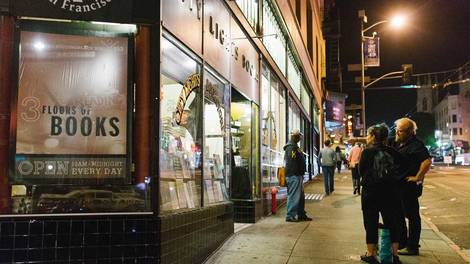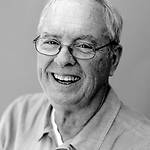
Special Issue
CRASE
Bright Future or Cautionary Tale? How the Bay Area Shapes the Future of the U.S.
Bay Area – Nexus of Change – but Toward What?

As I write this, I am sitting in the revered coffee house in San Francisco’s North Beach, Caffe Trieste. It was here that the artists and radicals, poets and visionaries gathered in the years after World War II. Opera recitals were as common as poetry readings in the 1950’s, and indeed the cappuccino and latte drinks so popular in the US are said to have originated here. One of the early denizens of the Trieste was Lawrence Ferlinghetti, who opened the iconic bookstore and publishing house City Lights just down the street, and withstood a famous obscenity trial in 1957 for publishing Alan Ginsberg’s “Howl.”
The scene in Caffe Trieste is a little different today. Perhaps two thirds of the patrons are tourists. There are still the old timers, North Beach denizens who have managed to resist the rising prices. Until recently, you could still see Paul Kantner of the rock band Jefferson Airplane most mornings, along with the other aging jazz musicians, comedians, and poets. The West was the last place to run, the far end of the continent which, according to the Turner Thesis, was the last stop for eccentrics, outsiders, and nonconformists escaping from the centers of power in the East and Midwest.
San Francisco was the home of Tina Modotti and Maya Angelou, Harry Bridges and Betita Martínez, Harvey Milk and Luis Valdez. The Bay Area gave birth to Marcus Books and the Black Panther party, Inkworks Press and the Alcatraz American Indian Movement takeover, the Third World Strike and the Free Speech Movement and the International Hotel struggle. The city was beautified by the Precita Eyes muralists and Loco Bloco performances.
In other words, the cultural identity of the Bay Area was, to borrow a description from Judith Ortiz Cofer, a land “of dreamers, of philosophers, fools, drunkards, of widows, new mothers, small children, of old people, cripples, saints, and poets.” It occupied the ground of radical outsiderness. And because of that it offered visions and hope for a new world.
Watching the parade of hipsters and tourists marching up Grant Street, passing the shop that formerly sold holy statues from nearby St Francis of Assisi church but now proffers expensive clothes, I wonder what kind of culture San Francisco and the Bay Area project today. Now such celebrations as Carnival, LGBTQ Pride Parade, and Dia de los Muertos are reduced to so many easy pastimes for wealthy newcomers snapping up million dollar bungalows.
As I am pondering, an oversized bus crawls up Vallejo street. I can’t tell if it’s a tour bus or one of those special commuter buses for Google or Facebook employees, allowing them to live in the cultural fun of the city before being swept to the giant tech campus/factory further south. The tech buses no longer advertise the name of the sponsoring company, however, because of a series of protests and bus blockings carried out by anti-gentrification activists.
While the Bay Area may still carry a reputation as cutting edge, creative, and innovative, I worry that the raggedy, anarchic, artistic soul of it has been eviscerated and in its place is a kind of tech-driven libertarianism. The self-confident “bro” culture of Silicon Valley, the notion that there is an engineering fix for everything and that these dudes at their computer stations can invent it, has a smothering impact on the culture and its possibilities.
The shift of culture is seen in the changing meaning of our language. Take the word “freedom.” The first thing this word conjures today for people is free choice, free markets, free competition – all libertarian mandates that are currently fashionable. In 2018, the term freedom conjures the idea of personal freedom, the right to do what you want.
That’s understandable. We live in the times we are in and our neoliberal age exerts certain ideological framings for all of us. But I would argue that the implications of the term freedom in the 1960’s, during the great upsurges were quite different. “Freedom! Freedom Now!” was the cry of the Civil Rights and Black Liberation movements. The overall demand was for freedom as a people, for liberation as a community, for a complete break from imperialist domination. The term “freedom” itself has existential resonance, meaning that people were demanding the right and possibility to be fully realized, to live collectively and yet to have deep agency and power, to have not just formal bourgeois democracy but real participatory democracy.
That is a far cry from the individualist freedoms that characterize the gig economy, the Bay Area’s new libertarian tech culture, and even the ultra-right Freedom Caucus in the US House of Representatives.
So my question as I sit here at the wooden table scratched with lovers’ initials at Caffe Trieste, is this: Are we really a center of development, promising economic growth and prosperity for the 21st century – or are we living on an artificial bubble, riding on unsustainable profits in a parasitic economy? In my nightmares, I imagine that, far from showing the way in the next 20 years, San Francisco will be remembered as a cautionary tale, a once-thriving center ravaged by earthquakes and global warming storms, bereft of ideas or resources to rebuild.
Only our work and struggle over the next few years will decide the question.
 Rick Ayers is an Associate Professor of Education at the University of San Francisco. His research and writing focuses on social justice issues. His most recent book is You can’t fire the bad ones: And 18 other myths about teachers, teachers unions, and public education, co-authored with Bill Ayers and Crystal Laura. He writes a regular blog for Medium.com.
Rick Ayers is an Associate Professor of Education at the University of San Francisco. His research and writing focuses on social justice issues. His most recent book is You can’t fire the bad ones: And 18 other myths about teachers, teachers unions, and public education, co-authored with Bill Ayers and Crystal Laura. He writes a regular blog for Medium.com.